Labradoodle Teething Guide – Teething Age
Labradoodle puppies are similar to human children in the same way that they lose their teeth. These sharp, tiny baby teeth will fall out as they mature, and new adult ones will replace them.
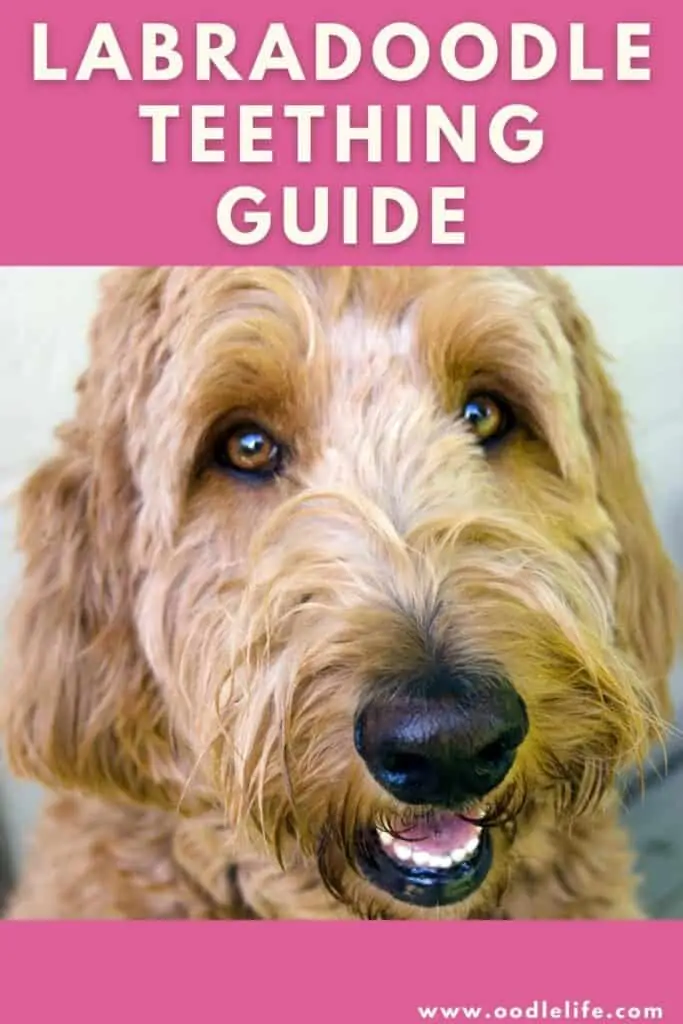
The teething stage for a puppy can be challenging, especially when they are chewing everything in their reach. However, once you understand this part of its development and how to help your pet, it can be an easier time to get through.
Labradoodles Teething Age
There are many stages to Labradoodles teething. They include:
- Birth to 4 weeks
- 6 weeks to 3 or 4 months old
- 3 to 6 months of age
- 8 months old and beyond
Each stage requires different care and may be shorter or longer than the one before it. Knowing the details of your Labradoodles teething can help you navigate this time with them.
Your Labradoodles teething stage can begin as early as three months of age and may last up to seven months.
Birth To 4 Weeks Old
Your Labradoodle puppy is not born with teeth present. The first set of teeth take anywhere from three to four weeks to come in fully. Puppies do not need teeth at this time since they get all of the nutrition they need from nursing with their mom.

4 Weeks Old to 3 or 4 Months Old
Your Labradoodle will have its first set of puppy teeth, also known as deciduous teeth, coming in when it turns three to four weeks old. This set contains only 28 teeth and does not include any molars since those teeth are permanent and come in later.
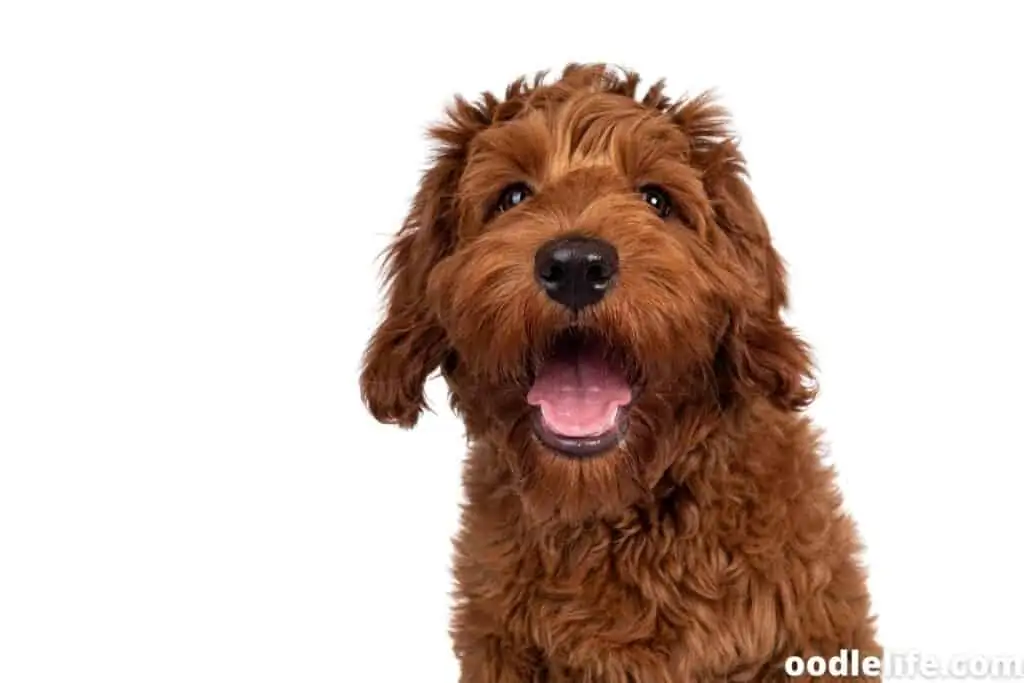
As these teeth appear, it can be painful for the puppy, and they will look for anything to chew to help relieve the pressure of emerging teeth.
This first set of teeth are quite pointy and can be painful if your pup bites you while playing. Thankfully, these sharp little teeth do not stick around for long. A puppy can begin losing the first set as early as a month after they emerge.
3 to 6 Months of Age
Between four and six months of age, your Labradoodle puppy will begin losing its first set of teeth as the permanent ones come in to replace them. They fall out easily because a dog’s gums will naturally absorb the tooth root, causing them to become loose.
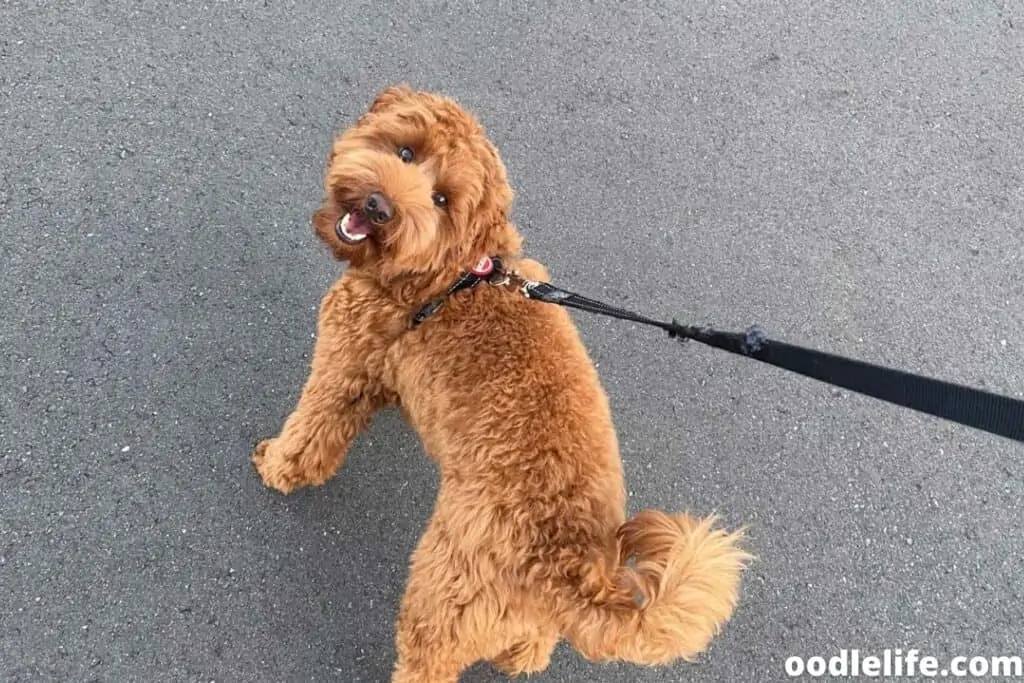
As the next set of teeth start emerging, they will push these baby teeth out. So, typically, your dog will lose its incisors first, with the others quickly following.
You may find puppy teeth around your home, but often a Labradoodle will swallow them while playing or eating. It is not harmful to a dog to eat its first set of teeth, and you may not even notice when your pet loses these teeth.
You don’t need to worry, though. Your Labradoodle will not have tooth gaps like human children do when their teeth fall out. They can still chew their food and treats without problems. Often, once a dog’s puppy teeth fall out, the adult tooth is right there, ready to take over the spot.
Nearing six months of age, your dog should have their second set of teeth almost entirely.
8 Months Old and Beyond
Once your Labradoodle reaches approximately eight months old, all of the adult teeth should be in place. A veterinarian will typically check their teeth at each checkup appointment for any crooked ones, underbites, or other jaw issues that may be a concern.
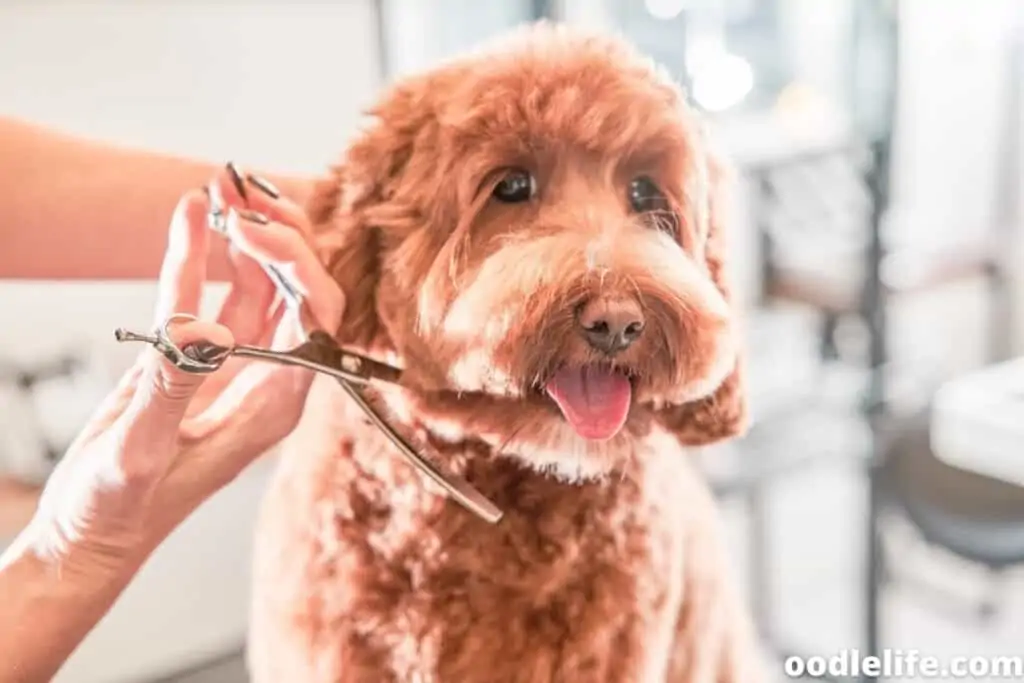
Your Labradoodle should have 42 adult teeth at this time. The entire teething process can take up to the age of 10 or 12 months to complete.
Signs of Teething in Your Labradoodle
This teething guide uses approximate timelines as a reference. Each dog is individual, and its teeth may come in or fall out at different times than this outline.
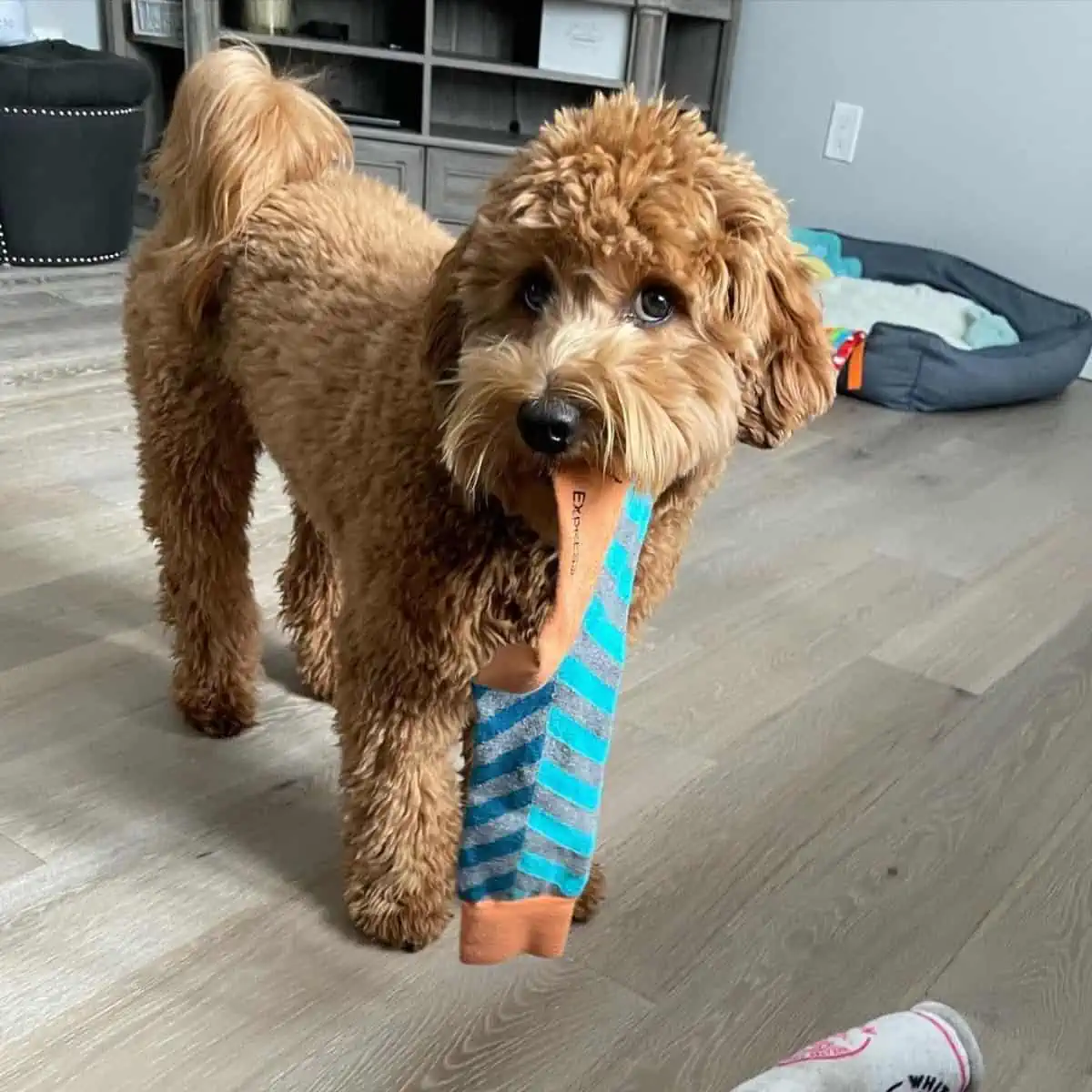
If you are unsure if your Labradoodle is teething, there are some tell-tale signs, including:
- Chewing on everything
- Drooling
- Spots of blood on toys or food
- Swollen or red gum tissue
- Change in appetite
- Excessive whining
- Finding teeth around your home
One concern some dog owners have is when their puppy does not lose this first set on schedule. If you have any questions about the timeline or the rate at which your Labradoodle’s teeth are coming in, be sure to talk to your local veterinarian.
How To Help Your Teething Labradoodle?
You can help your puppy deal with this teething transition with various methods. By providing your Labradoodle with ways to curb tooth pain, there will be less damage to your belongings, and your pup will be happier.
Try some of these methods with your teething Labradoodle:
- Use special puppy teething gel
- Provide durable chewing treats, like Bully Sticks
- Give them frozen treats to chew on
- Ensure they have numerous types of toys for chewing
Puppy Teething Gel
No products found.
Some dog owners prefer to use a teething gel for added relief. Be sure to choose a product for your puppy that does not contain any unsafe ingredients. Also, be diligent in following the manufacturer’s instructions on dosage, as each product may differ.
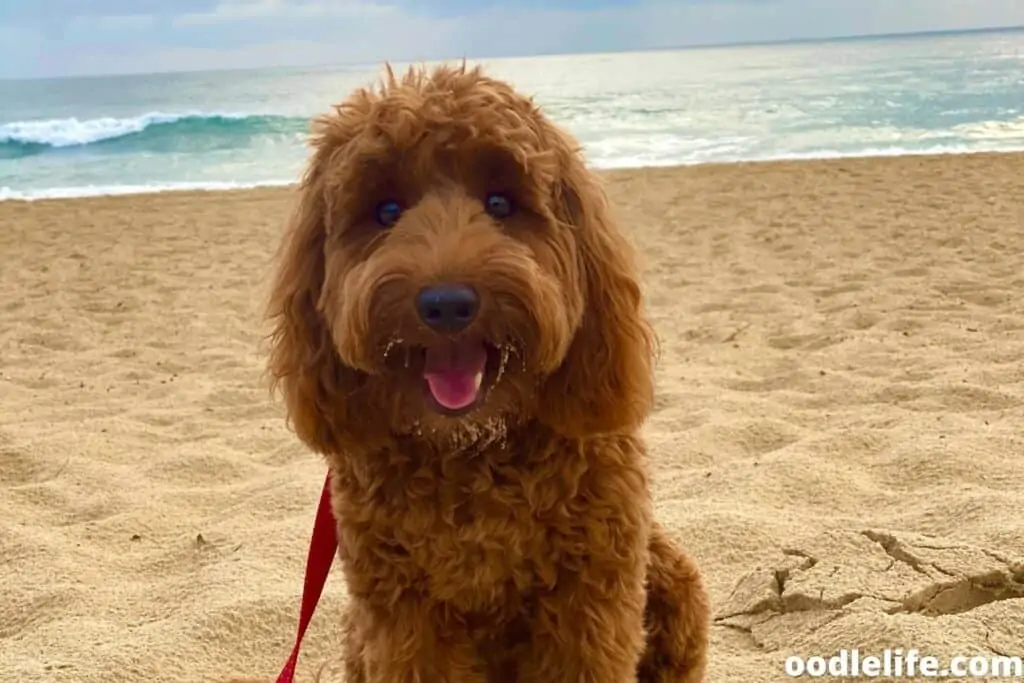
Durable Chewing Treats
Finding durable chewing treats like Bully Sticks can be a terrific way for your pet to help relieve the pressure on its gum tissue. Many Labradoodles will prefer to chew on a tasty treat rather than your smelly shoes when given the option.
Frozen Treats
Many human foods are entirely safe for your puppy to have. Carrots are one of these items in your fridge that can help provide some relief to your Labradoodle while they are teething.
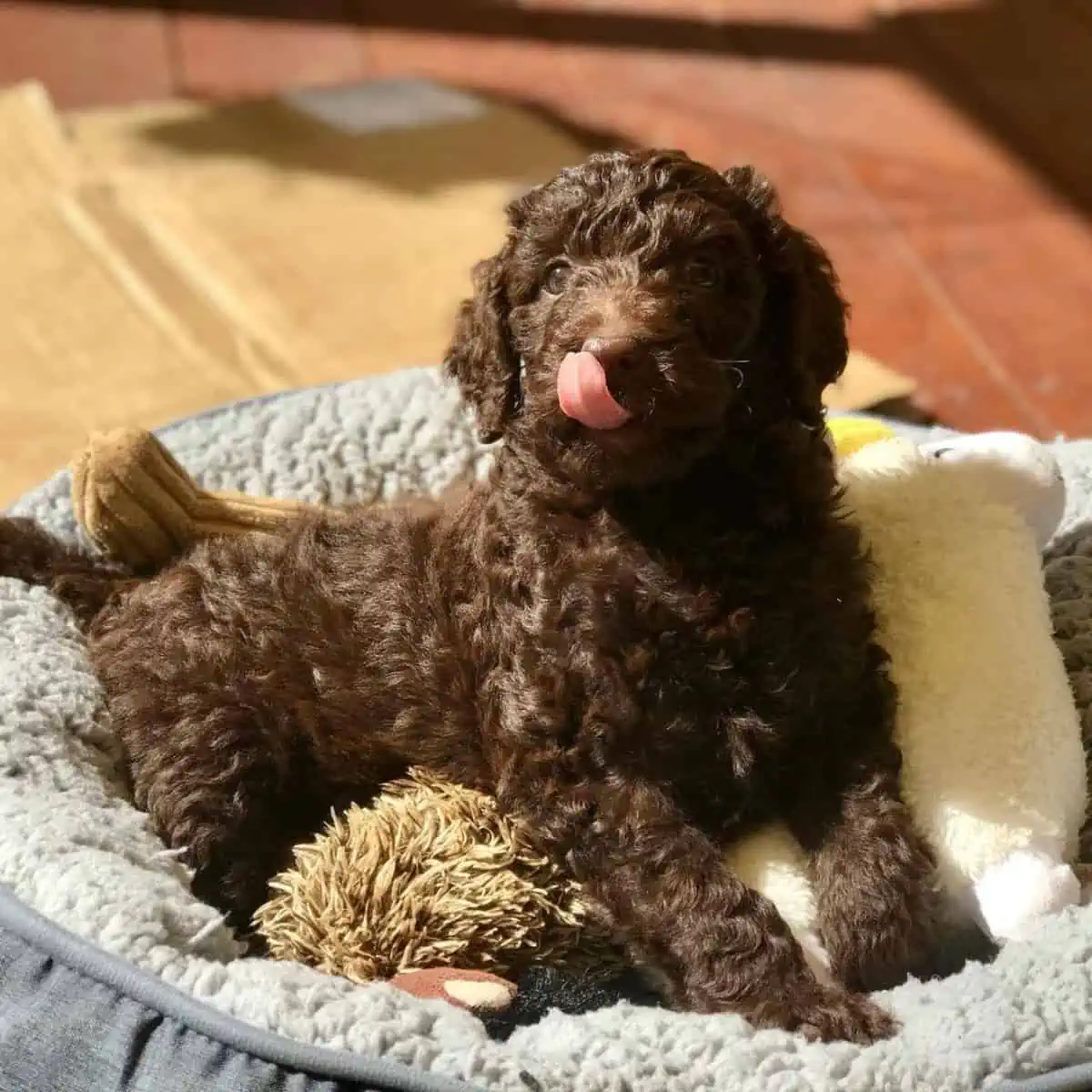
You can offer a raw cold carrot to your pup straight from your fridge or freeze them for extra relief. Remember to monitor your Labradoodle during this time to make sure they do not choke on any large pieces that may break off.
Toys For Chewing
You can find dozens of special toys that can help your pup with any chewing habits. From durable Kong toys to braided rope toys, each material can provide a different benefit.
Try to give your Labradoodle a variety of chew toys so they don’t get bored, and use these items instead of your favorite book that you left on the table. It is always better to have several toys for them rather than your puppy looking for something in your home to chew on.
Begin an Oral Hygiene Routine Sooner Than Later
Taking care of your Labradoodle’s teeth is a continuous job. You should be preparing a regular oral hygiene routine from the first time you bring your new Labradoodle puppy home. First, gently handle your dog’s muzzle and mouth to get them used to your hands.
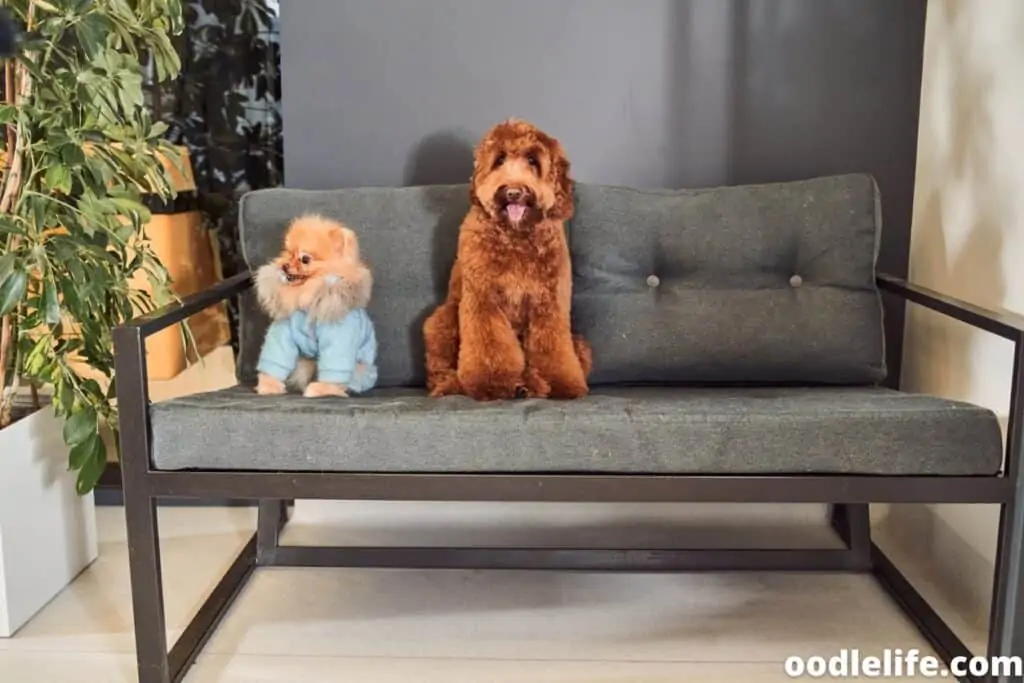
Once they are comfortable with the attention in their mouth, you can brush their teeth with a toothbrush without any paste. By doing this, your pup will become accustomed to having you put a brush in their mouth.
Eventually, you can work towards using a special dog toothpaste to help keep their teeth clean and healthy throughout their lifetime. With proper oral care, you can minimize any issues your Labradoodle may have later on in life.
Teething In Labradoodle Puppies Will Not Last Forever
Although it may seem like your Labradoodle puppy will be teething forever, they will have all of their adult teeth in before you know it. This challenging time can be hard on you and your dog as its first set of teeth fall out and the permanent ones come in.
By remembering the many stages of a teething puppy, you will have a better idea of how to help your new pet. Of course, if you have any concerns about your dog’s puppy teeth or how the permanent teeth are coming in, be sure to talk to your local veterinarian.